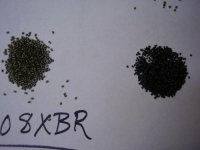Bob Kingsbury
New member
We have some truely great measures being made, but I am not
naive enough to believe that any are made that can overcome
human error. That some great groups have been shot with loads
checked or weighed on lab scales is at this point IMO not proof
that it is a must do. Some can run measures much better than
others and some could not reliably make 12 ice cubes in a 12 cube
tray. It has been said by great shooters , that 8208 has a window
a truck could be driven thru. If the new stuff will only accomodate
a fair sized SUV, I'd be happy. That it lacks the odd and irregular
grains that plague 133 is a big plus. That VV was made from cotton
apparently was not as important as we believed. The 8208brx shows
great promise, nothing is perfect
naive enough to believe that any are made that can overcome
human error. That some great groups have been shot with loads
checked or weighed on lab scales is at this point IMO not proof
that it is a must do. Some can run measures much better than
others and some could not reliably make 12 ice cubes in a 12 cube
tray. It has been said by great shooters , that 8208 has a window
a truck could be driven thru. If the new stuff will only accomodate
a fair sized SUV, I'd be happy. That it lacks the odd and irregular
grains that plague 133 is a big plus. That VV was made from cotton
apparently was not as important as we believed. The 8208brx shows
great promise, nothing is perfect


